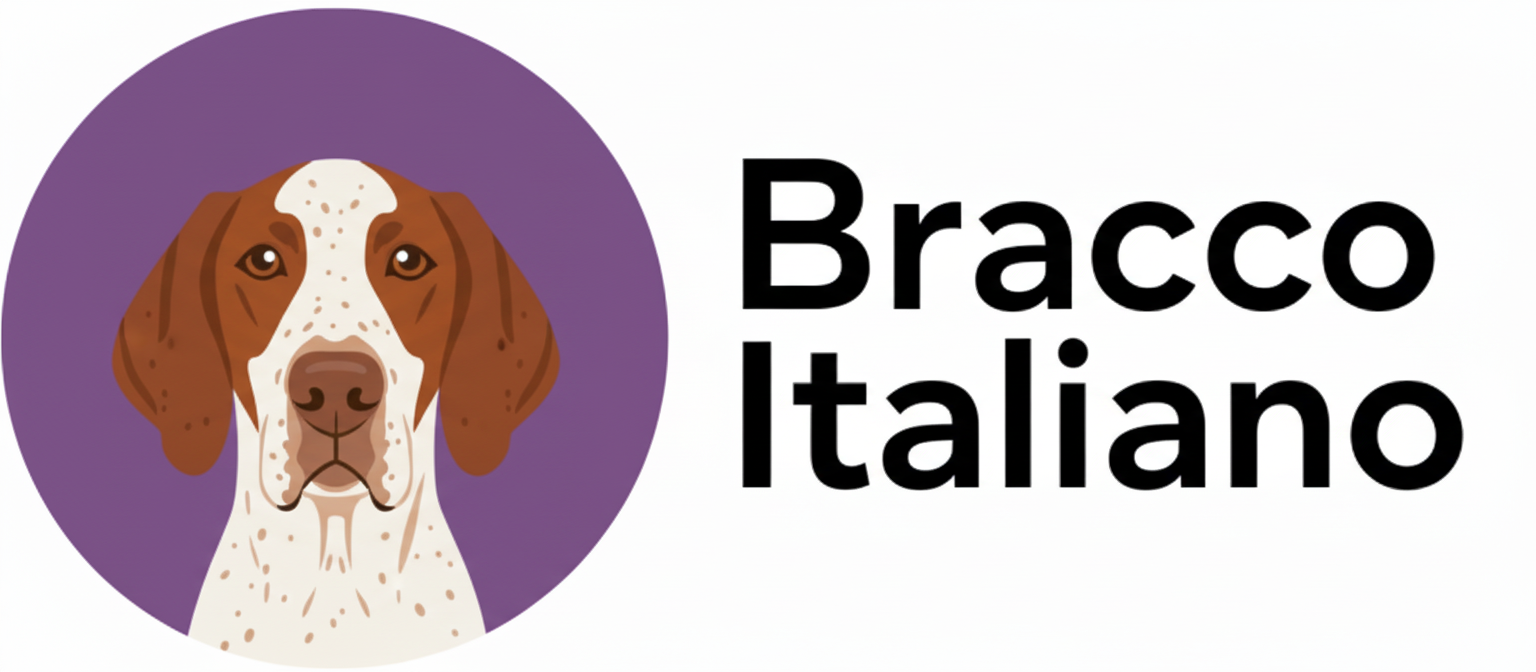Did you know that breeding a Bracco Italiano at the wrong time can compromise the health of an entire bloodline? This ancient Italian hunting breed, with its distinctive orange and white coat, requires precise timing to maintain its genetic integrity.
Determining when to breed a Bracco Italiano depends on several critical factors: physical maturity (typically 18-24 months), completed health clearances, proper temperament evaluation, and optimal breeding cycles. The timing directly impacts puppy health, genetic diversity, and the preservation of this rare breed’s exceptional hunting abilities.
Professional breeders understand that rushing into breeding can lead to developmental issues, while waiting too long may reduce fertility and genetic viability. This comprehensive guide will walk you through the essential timing considerations for responsible Bracco Italiano breeding.
Understanding Bracco Italiano Physical and Mental Maturity
The Bracco Italiano reaches sexual maturity around 6-12 months, but breeding readiness occurs much later. Physical development continues until 18-24 months for females and up to 36 months for males.
Key maturity indicators include complete skeletal development, stable temperament, and full muscle development. According to the United Kennel Club breed standards, these powerful, symmetrical dogs need adequate time to develop their distinctive head shape and strong muscular frame.
Mental maturity proves equally important, as the breed’s intelligence and trainability must be fully established before breeding decisions. Premature breeding can result in anxious or unstable temperaments being passed to offspring.
Male Breeding Readiness Timeline
Male Bracco Italianos typically reach breeding readiness between 12-18 months. However, optimal breeding age ranges from 2-5 years when they’ve achieved full physical and mental development.
Essential requirements include two normally descended testicles and proven fertility through semen analysis. Many breeders prefer waiting until males are 24 months to ensure complete development of their characteristic docile yet hardy temperament.
Female Breeding Considerations
Female Bracco Italianos should not be bred before their second heat cycle, usually occurring between 12-18 months. The ideal breeding window spans ages 2-6 years, with peak fertility typically between 2-4 years.
Monitoring heat cycles becomes crucial, as breeding during the optimal ovulation window maximizes conception rates and healthy litter sizes. Most females cycle every 6-8 months, providing multiple breeding opportunities within the prime reproductive years.
Essential Health Clearances Before Breeding
Health testing represents the cornerstone of responsible Bracco Italiano breeding. These tests should be completed and results verified before any breeding decisions.
| Health Test | Minimum Age | Validity Period | Purpose |
|---|---|---|---|
| Hip Dysplasia (OFA/PennHIP) | 24 months | Lifetime | Joint health screening |
| Elbow Dysplasia | 24 months | Lifetime | Joint health screening |
| Eye Clearance (CERF) | 12 months | Annual | Hereditary eye disease detection |
| Cardiac Clearance | 12 months | Annual | Heart condition screening |
The Bracco Italiano Club of America emphasizes thorough health screening as part of ethical breeding practices. These clearances ensure breeding dogs are free from genetic conditions that could impact offspring quality and welfare.
DNA testing for breed-specific genetic markers provides additional insights into potential hereditary conditions. Results help breeders make informed decisions about compatible breeding pairs.
How to Determine Optimal Breeding Timing
Successful Bracco Italiano breeding requires careful coordination of multiple factors. Follow this step-by-step approach for optimal timing:
- Complete health clearances: Ensure all required health tests are current and results are favorable for both breeding partners.
- Track female heat cycles: Monitor cycle patterns for at least one year to predict optimal breeding windows.
- Evaluate temperament stability: Assess both dogs for the breed’s characteristic gentle, even nature and adaptability.
- Plan breeding season: Consider environmental factors, veterinary availability, and your schedule for puppy care.
- Coordinate with stud dog owner: Arrange timing, contracts, and logistics well in advance of the planned breeding.
Professional reproductive veterinarians can provide progesterone testing and artificial insemination services to maximize breeding success rates. These services prove especially valuable for preserving genetic diversity in this relatively rare breed.
Seasonal Breeding Considerations
Spring and early summer breeding often produces optimal results, allowing puppies to be born during moderate weather conditions. This timing supports better puppy development and easier socialization opportunities.
Avoid breeding during extreme weather seasons when temperature fluctuations could stress pregnant females or compromise puppy health during their critical first weeks.
Age-Related Breeding Guidelines
Understanding age-related breeding parameters helps maintain the Bracco Italiano’s genetic integrity while maximizing reproductive success. Proper understanding of Bracco Italiano size development is crucial for determining breeding readiness at different life stages.
Prime Breeding Years
The optimal breeding window for Bracco Italianos spans different timeframes for males and females:
- Females: Ages 2-6 years provide peak fertility and lowest complication rates
- Males: Ages 2-8 years offer consistent fertility and genetic contribution
- First-time mothers: Breeding between ages 2-4 years reduces whelping complications
- Experienced mothers: Can safely breed until age 6-7 with proper veterinary monitoring
The breed’s hardy and adaptable nature supports successful breeding within these parameters, but individual health assessments remain crucial for each breeding decision.
Retirement Guidelines
Responsible breeders retire females after age 7 or five litters, whichever comes first. Males can contribute to breeding programs longer but should undergo annual fertility assessments after age 8.
Early retirement preserves the breeding dog’s quality of life while maintaining genetic diversity within the breed population. This approach aligns with the Bracco Italiano’s gentle temperament and ensures dogs enjoy comfortable senior years with proper care including regular grooming with a quality brush to maintain their coat health.
Genetic Diversity and Breeding Frequency
Maintaining genetic diversity in the Bracco Italiano requires strategic breeding frequency planning. This rare breed benefits from careful lineage tracking and outcrossing when appropriate.
Females should have at least 12-18 months between litters to allow complete physical recovery. This interval supports optimal maternal health and puppy development while preventing genetic bottlenecks.
The breed’s increasing popularity creates opportunities for expanding genetic diversity, but also risks compromising quality through inappropriate breeding decisions. Working with experienced breeders and breed clubs helps navigate these challenges.
Coefficient of Inbreeding Considerations
Calculating the coefficient of inbreeding (COI) for potential breeding pairs helps maintain genetic health. Ideal COI percentages for Bracco Italiano breedings should remain below 6.25% to minimize hereditary health risks.
Modern genetic testing and pedigree analysis tools enable breeders to make data-driven decisions about genetic compatibility and diversity preservation.
Understanding when to breed a Bracco Italiano requires balancing multiple factors including physical maturity, health clearances, genetic diversity, and optimal timing windows. Successful breeding occurs when females are 2-6 years old with completed health testing, proper temperament evaluation, and strategic genetic planning. The breed’s gentle nature and hardy constitution support successful reproduction within these parameters, but individual assessment remains crucial for each breeding decision. Remember that patience in timing breeding decisions ultimately preserves this remarkable Italian hunting breed’s exceptional qualities for future generations.
Frequently Asked Questions
What is the earliest age to breed a female Bracco Italiano?
Female Bracco Italianos should not be bred before 18-24 months of age, preferably after their second heat cycle. This allows complete physical development and ensures skeletal maturity, which is crucial for safe pregnancy and whelping in this large breed.
How often can you breed a Bracco Italiano female?
Responsible breeding limits females to one litter per year with 12-18 months between breedings. This interval allows complete physical recovery and maintains optimal maternal health. Most ethical breeders retire females after 5 litters or age 7, whichever comes first.
What health tests are required before breeding Bracco Italianos?
Essential health clearances include hip and elbow dysplasia screening (OFA or PennHIP), annual eye examinations (CERF), cardiac clearances, and breed-specific genetic testing. All tests should show favorable results before breeding, with some requiring annual updates. Understanding Bracco Italiano allergies and health concerns is also important for breeding decisions.
How do you know when a Bracco Italiano is ready for breeding?
Breeding readiness involves physical maturity (18-24 months), completed health clearances, stable temperament consistent with breed standards, and proper reproductive health. Males need two normally descended testicles, while females should have regular heat cycles and structural soundness.
Can older Bracco Italianos still be bred safely?
Males can breed safely until age 8-10 with annual health monitoring and fertility assessments. Females should retire by age 7 or after 5 litters to prevent age-related complications. Breeding older dogs requires additional veterinary oversight and health evaluations.
What is the best season to breed Bracco Italianos?
Spring breeding often produces optimal results, with puppies born during moderate summer weather. This timing supports better maternal comfort during pregnancy and easier puppy development during critical early weeks. Avoid breeding during extreme weather seasons.
How long should you wait between Bracco Italiano litters?
Wait minimum 12-18 months between litters to allow complete maternal recovery. This interval supports optimal puppy health, maintains genetic diversity, and preserves the female’s long-term reproductive health. Many breeders prefer 18-24 month intervals for optimal results. Providing pregnant and nursing mothers with a comfortable supportive bed helps ensure proper rest during this demanding period.

